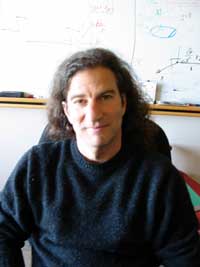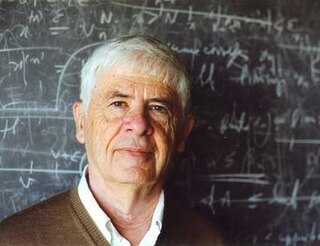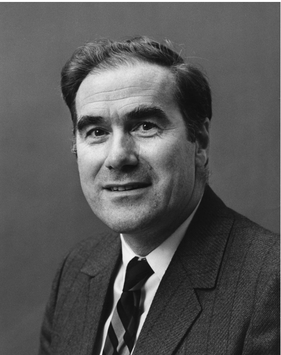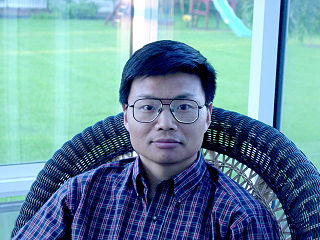The Norbert Wiener Prize in Applied Mathematics is a $5000 prize awarded, every three years, for an outstanding contribution to "applied mathematics in the highest and broadest sense." It was endowed in 1967 in honor of Norbert Wiener by MIT's mathematics department and is provided jointly by the American Mathematical Society and Society for Industrial and Applied Mathematics and first issued in 1970. The recipient of the prize has to be a member of one of the awarding societies.

James Albert Sethian is a professor of mathematics at the University of California, Berkeley and the head of the Mathematics Group at the United States Department of Energy's Lawrence Berkeley National Laboratory.

Alexandre Joel Chorin is an American mathematician known for his contributions to computational fluid mechanics, turbulence, and computational statistical mechanics.
Charles Samuel Peskin is an American mathematician known for his work in the mathematical modeling of blood flow in the heart. Such calculations are useful in the design of artificial heart valves. From this work has emerged an original computational method for fluid-structure interaction that is now called the “immersed boundary method", which allows the coupling between deformable immersed structures and fluid flows to be handled in a computationally tractable way. With his students and colleagues, Peskin also has worked on mathematical models of such systems as the inner ear, arterial pulse, blood clotting, congenital heart disease, light adaptation in the retina, control of ovulation number, control of plasmid replication, molecular dynamics, and molecular motors.

Gerald Beresford Whitham FRS was a British–born American applied mathematician and the Charles Lee Powell Professor of Applied Mathematics (Emeritus) of Applied & Computational Mathematics at the California Institute of Technology. He received his Ph.D. from the University of Manchester in 1953 under the direction of Sir James Lighthill. He is known for his work in fluid dynamics and waves.
Chi-Wang Shu is the Theodore B. Stowell University Professor of Applied Mathematics at Brown University. He is known for his research in the fields of computational fluid dynamics, numerical solutions of conservation laws and Hamilton–Jacobi type equations. Shu has been listed as an ISI Highly Cited Author in Mathematics by the ISI Web of Knowledge.

Andrew Joseph Majda was an American mathematician and the Morse Professor of Arts and Sciences at the Courant Institute of Mathematical Sciences of New York University. He was known for his theoretical contributions to partial differential equations as well as his applied contributions to diverse areas including shock waves, combustion, incompressible flow, vortex dynamics, and atmospheric sciences.

Emmanuel Jean Candès is a French statistician most well known for his contributions to the field of Compressed sensing and Statistical hypothesis testing. He is a professor of statistics and electrical engineering at Stanford University, where he is also the Barnum-Simons Chair in Mathematics and Statistics. Candès is a 2017 MacArthur Fellow.
Hermann Flaschka was an Austrian-American mathematical physicist and Professor of Mathematics at the University of Arizona, known for his important contributions in completely integrable systems.

Weinan E is a Chinese mathematician. He is known for his pathbreaking work in applied mathematics and machine learning. His academic contributions include novel mathematical and computational results in stochastic differential equations; design of efficient algorithms to compute multiscale and multiphysics problems, particularly those arising in fluid dynamics and chemistry; and pioneering work on the application of deep learning techniques to scientific computing. In addition, he has worked on multiscale modeling and the study of rare events.
Marsha J. Berger is an American computer scientist. Her areas of research include numerical analysis, computational fluid dynamics, and high-performance parallel computing. She is a Silver Professor (emeritus) of Computer Science and Mathematics in the Courant Institute of Mathematical Sciences of New York University. She is Group Leader of Modeling and Simulation in the Center for Computational Mathematics at the Flatiron Institute.
Catherine Sulem is a mathematician and violinist at the University of Toronto.
Rachel Ann Kuske is an American-Canadian applied mathematician and Professor and Chair of Mathematics at the Georgia Institute of Technology.
Irena Lasiecka is a Polish-American mathematician, a Distinguished University Professor of mathematics and chair of the mathematics department at the University of Memphis. She is also co-editor-in-chief of two academic journals, Applied Mathematics & Optimization and Evolution Equations & Control Theory.
The Josiah Willard Gibbs Lectureship of the American Mathematical Society is an annually awarded mathematical prize, named in honor of Josiah Willard Gibbs. The prize is intended not only for mathematicians, but also for physicists, chemists, biologists, physicians, and other scientists who have made important applications of mathematics. The purpose of the prize is to recognize outstanding achievement in applied mathematics and "to enable the public and the academic community to become aware of the contribution that mathematics is making to present-day thinking and to modern civilization."
Panayotis G. Kevrekidis is a professor in the Department of Mathematics and Statistics at the University of Massachusetts Amherst. Kevrekidis earned his B.Sc. in physics in 1996 from the University of Athens. He obtained his M.S. in 1998 and his MPhil and Ph.D. in 2000 from Rutgers University, the latter under the joint supervision of Joel Lebowitz and Panos G. Georgopoulos. His thesis was entitled “Lattice Dynamics of Solitary Wave Excitations”. He then assumed a post-doctoral position split between the Program in Applied and Computational Mathematics of Princeton University (10/2000–02/2001) and the Theoretical Division and the Center for Nonlinear Studies of Los Alamos National Laboratory (03/2001–08/2001). From 09/2001, he joined the Department of Mathematics and Statistics of the University of Massachusetts Amherst as an assistant professor. He was awarded tenure and promotion to associate professor in 06/2005. As of 09/2010, he is a full professor at the same institution. He is presently the Stanislaw M. Ulam Scholar at the Center for Nonlinear Studies at Los Alamos National Laboratory.
The Peter Henrici Prize is a prize awarded jointly by ETH Zurich and the Society for Industrial and Applied Mathematics (SIAM) for "original contributions to applied analysis and numerical analysis and/or for exposition appropriate for applied mathematics and scientific computing". The prize is named in honor of the Swiss numerical analyst Peter Henrici, who was a professor at ETH Zurich for 25 years.
Sven Leyffer is an American computational mathematician specializing in nonlinear optimization. He is a Senior Computational Mathematician in the Laboratory for Applied Mathematics, Numerical Software, and Statistics at Argonne National Laboratory.

Konstantina Trivisa is a Greek-American applied mathematician whose research involves nonlinear partial differential equations, fluid dynamics, and the mathematical modeling of flocking. She is a professor of mathematics at the University of Maryland, College Park, where she directs the Institute for Physical Science & Technology.
Doron Levy is a mathematician, scientist, magician, and academic. He is a Professor and chair at the Department of Mathematics at the University of Maryland, College Park. He is also the Director of the Brin Mathematics Research Center.







